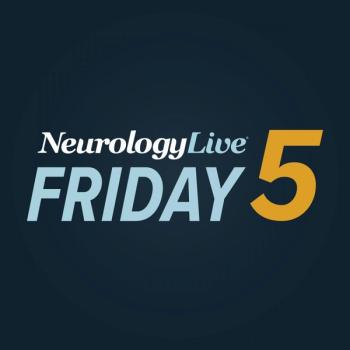
Targeting A3AR in Trigeminal Neuropathic Pain: A Promising Approach for an Unmet Clinical Need
Marcela Romero-Reyes, DDS, PhD, FAHS, director of the Brotman Facial Pain Clinic at the University of Maryland, discussed a promising and potentially safer therapeutic approach for managing trigeminal neuropathic pain.
Trigeminal neuropathic pain is a chronic orofacial condition that can significantly impact patients’ quality of life, leading to both functional and psychological impairment. It can result from various causes, including neuroinflammation, tumors, infections, systemic or metabolic disorders, and nerve injury from dental procedures or facial trauma. Research suggests that since the underlying mechanisms of trigeminal sensitization are not well understood, treatment can be challenging for patients, with current pharmacologic options often failing to provide adequate relief or are limited by intolerable adverse effects.
Recently, at the
To dive deeper, Romero-Reyes, director of the Brotman Facial Pain Clinic in the Department of Neural and Pain Sciences at the University of Maryland School of Dentistry, sat down with NeurologyLive® to further discuss this new target for managing trigeminal neuropathic pain, prior to her presentation. In the conversation, Romero-Reyes, described the challenges with current pharmacologic options, including frequent adverse effects and lack of specificity for trigeminal disorders. Overall, she noted that this newer approach could represent a safer, more targeted nonopioid treatment option for a population with limited choices.
NeurologyLive: Could you provide a brief overview of your presentation on this new target for patients with trigeminal neuropathic pain?
Marcela Romero-Reyes, DDS, PhD, FAHS: I'm very excited about this new potential target for the management of trigeminal neuropathic pain. Maybe it will be a little bit surprising—well, we’re at a headache meeting, and we’re talking about neuropathic pain. But it's another trigeminal-mediated pain disorder that I think is sometimes the elephant in the room. It also causes a lot of struggles for our patients.
I’d like to say I’m very fortunate, because as a care provider, I'm an orofacial pain specialist who also does basic science, so I’m able to experience firsthand the needs of the patients, particularly those with trigeminal neuropathic pain disorders. I'm able to see this translation of the need to go from clinical care to the bench, and back. One of the focuses of our lab, our research group, is drug discovery, target discovery, and also repurposing drugs that may be used for other nonpain indications but have been shown to be safe in humans, with the hope of exploring their feasibility for pain management.
What would be some of the potential clinical implications of this new target, in terms of efficacy and safety?
One of the reasons I think this is exciting is because a lot of the medications we use for trigeminal neuralgia or, in this case, my talk is going to focus on post traumatic trigeminal neuropathic pain, have limitations. This type of pain is a maladaptive response that can follow nerve trauma from dental procedures, like third molar extraction or implant surgery, facial trauma, or sometimes infections, metabolic disorders, or neoplasia. Our first-line treatment is pharmacologic, often involving polypharmacy with different classes of medications. But they tend to have a lot of adverse effects.
We often face the dilemma where the patient says, “Well, doctor, maybe the pain is controlled,”—if we’re lucky—but as soon as we increase the medication dose, adverse effects arise. Patients tell us, “I can’t think. I feel dizzy. I’m afraid to walk or fall.” So what would be the ideal medication? Ideally, it would be effective, nonaddictive, and safe with minimal adverse effects. Maybe I’m looking for the Holy Grail, but I want something effective that allows my patients to maintain their quality of life.
So, what if we could target something that is a waste product of the body? Something that doesn't serve a beneficial function and whose presence might actually be harmful? I’m talking about peroxynitrite, a nitroxidative species that’s a waste product formed from superoxide and nitric oxide. It’s a pronociceptive molecule.
We’ve shown, along with a wonderful collaborator at Saint Louis University, Daniela Salvemini, PhD, that targeting the breakdown of this molecule decreases central sensitization in models of neuropathic and inflammatory pain. I'm going to be focusing on this target in my talk.
However, directly targeting peroxynitrite is not practical, and I’ll explain more about that during the presentation. So we’re now focusing on how to target this waste product upstream, figuring out which receptor we can use to also achieve that benefit.
The main target in my talk is the adenosine system specifically, activation of the adenosine A3 receptor. We have very interesting preclinical data that’s exciting. In fact, activating this receptor has been shown in phase 2 clinical trials to be safe for nonpain-related disorders. We also have preclinical data in pain models showing that this activation is antinociceptive. I’ll be discussing that in detail in my talk.
Do you think this development can address some of the main challenges these patients face?
Well, that’s my hope. As I mentioned in the beginning, trigeminal neuropathic pain disorders, of course, alongside headache, are among the most challenging types of pain to treat. By the way, we’re also exploring this molecule in headache, particularly in migraine, in addition to its use in trigeminal neuropathic pain.
From my clinical experience with this patient population, the biggest problem is adverse effects. We don’t currently have medications tailored specifically for trigeminal neuropathic pain. We use drugs that were developed for neuropathic pain in other parts of the body, not specific to the trigeminal system.
As I said before, if we could offer patients something effective and safe—something that doesn’t impair cognition, doesn’t cause dizziness, and doesn’t lead to other systemic problems—I think that would be a huge win. It may sound too good to be true, but I’m very excited about the potential of activating the adenosine A3 receptor.
Do you see this potential treatment as an additional option for patients who may otherwise be considered for surgery?
Yes. For example, with trigeminal neuralgia, there are protocols where surgery may be offered if the patient has a lot of medication-related side effects. But that’s a separate conversation. For post traumatic trigeminal neuropathic pain, say involving the inferior alveolar nerve, there might be specific cases where surgery is discussed as an option.
But you see all the risks, and it’s like trying to resolve an injury with another injury, so to speak. I think for this particular disorder, post traumatic trigeminal neuropathic pain, pharmacotherapy could be a feasible and preferable option. The goal, of course, is to have something effective with minimal adverse effects. What I’ll be presenting is preclinical data, but, as I mentioned, this is a target that has already been shown to be safe in humans.
Transcript edited for clarity.
REFERENCES
1. Romero-Reyes M. A New Target for the Management of Trigeminal Neuropathic Pain. Presented at: 2025 AHS Annual Meeting; June 19-22; Minneapolis, MN. Hot Topic in Basic Science Talk 2.
Newsletter
Keep your finger on the pulse of neurology—subscribe to NeurologyLive for expert interviews, new data, and breakthrough treatment updates.



































